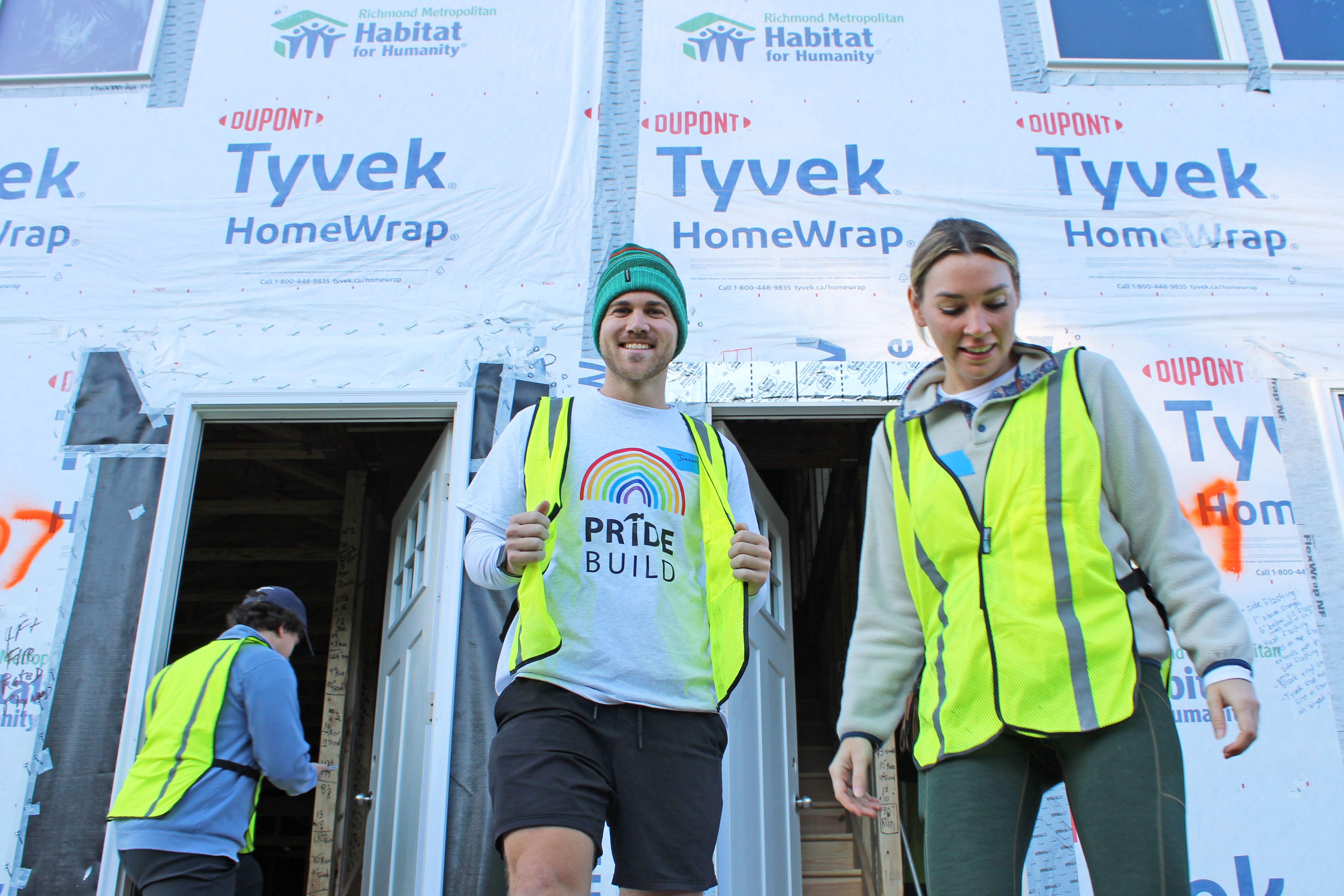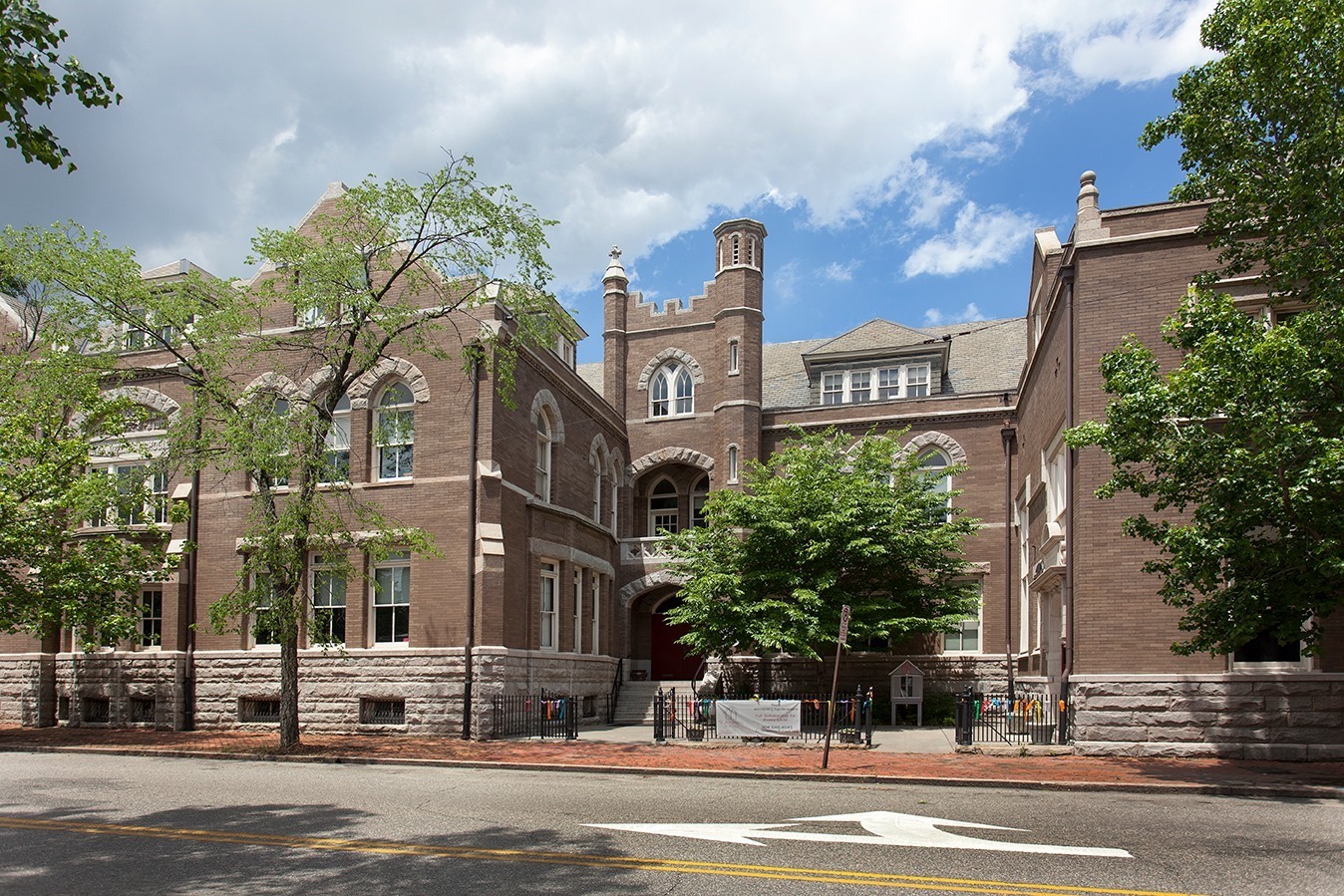Exploring Discriminatory Housing Policies in Richmond
by Ella Forlin
The current day housing market in Richmond, Virginia is rooted in a centuries-long history of racial discrimination. Therefore, in order to understand and redress modern-day housing crises, it is crucial to look back on Richmond’s history and the housing, zoning, and construction policies of the 1900s.
Historical Background
On April 9, 1865, the Confederate Army surrendered to Ulysses S. Grant at Appomattox Court House, Virginia, ending the Civil War. In the following years, states that had succeeded from the United States returned to the union via the Reconstruction Act of 1867. Upon returning, the formerly Confederate states were required to ratify the 13th, 14th and 15th Amendments and were occupied by American troops to ensure that they would pass acceptable new state constitutions. These amendments and new state constitutions were intended to outlaw slavery, give African Americans citizenship, protect citizens from abuses from state governments, and grant male citizens the right to vote regardless of “race, color, or previous condition of servitude.”
The period in American history directly after the Civil War is called “Reconstruction,” and it marked a period of expanding civil rights for Black and formerly-enslaved Americans. During this time, many Black Americans were able to vote, hold positions in office, and freely use government services. However, this period of relative legal equality for Black Americans came to an end after the Compromise of 1877 which removed Northern troops from Southern states. Since Southern states were no longer forced to uphold the rights dictated in the 14th and 15th Amendments, state governments passed laws violating the rights of Black Americans as a backlash to the Reconstruction period. This time was named the Jim Crow Era, and during it, state governments and individuals worked to curb the power and rights of Black citizens. State governments implemented poll taxes and literacy tests to prevent African Americans from voting, gerrymandered African American communities to reduce their influence in elections, and segregated public facilities citing ‘separate but equal’ doctrine dispelled by the Supreme Court.
Throughout the late 19th and early to mid 20th century, lawmakers and individuals pursued methods of segregating Black Americans and depriving them of the ability to live where they wanted to live. Federally funded housing programs neglected communities of color, and processes like redlining led to systematic disinvestment and lower property values in minority-majority neighborhoods. In Richmond, this discrimination has resulted in wealth discrepancies between white and Black Americans, segregation in high-income neighborhoods, and higher eviction rates among Black tenants. Ultimately, these issues will continue to affect the lives of people in Richmond until adequate laws and programs are adopted to redress the effects of systematic de jure and de facto segregation practiced during the 20th century.
The sections below will explain some factors that contributed to the racial segregation of Richmond and how they continue to affect communities of color.
Redlining
During the Great Depression, the New Deal government created the Federal Housing Administration, the FHA, to provide housing to Americans who had lost their homes during the economic crisis. While the FHA helped many families find housing during this time, they primarily helped “White, middle-class [to] lower-middle-class families,” excluding people of color. In 1933, to increase external investment in neighborhoods across the United States, the FHA measured the safety of investments in neighborhoods and graded neighborhoods from A to D to indicate their security. They created maps, outlining “safe,” primarily White neighborhoods in green, and “less safe” neighborhoods, mostly made up of African-Americans or other minorities, in red. On these maps, the federal government noted neighborhoods’ racial makeup, if there were any “relief families,” if there was any “infiltration” of any minorities, and the average annual family income among other qualities.
This process prevented neighborhoods of color from being included in beneficial homeownership programs and decreased investments in neighborhoods of color for decades to come. Black communities did not receive the same benefits from federal and private investment as white communities which meant that property owned by white families generally appreciated at a higher rate than black-owned property. Today, formerly redlined neighborhoods, on average, have a lower median house value in comparison to neighborhoods that were given an A grade.
Other Adverse Effects of the Federal Housing Administration
The FHA was much more likely to offer loan assistance to White families, making it easier for White families than Black families to afford and buy property during the 1930s. Since property assets are the main contributor to long-term wealth, the lack of investment in Black communities led to a wealth discrepancy between Black and White families that continues to this day. Dr. Robert Nelson, director of the Digital Scholarship Lab at University of Richmond, said in an interview with NPR that “[families of color] couldn’t avail themselves of what [was] arguably the most significant route to family and personal wealth-building in the 20th century,… homeownership.” Research from the Economic Policy Institute uncovered that the homeownership rate for Black Americans has remained stagnant since 1968 while the rate for White Americans has increased by approximately five percent.
Instead of helping people of color buy houses in suburban neighborhoods, the FHA often forced African Americans and other minorities into urban housing projects, claiming that if African Americans bought homes in or near suburbs, the property value of the houses would decrease. This process meant that people of color were often prevented from buying or keeping property in suburban and high-opportunity neighborhoods.
Discriminatory Zoning Laws
In the 1800s, local governments used zoning laws to implement standards for fire safety and light-and-air regulations. These zoning laws were later used to protect the property value of neighborhoods by defining specific provisions for how houses and buildings would be built. Zoning laws dictated how large the plots of land houses were constructed on would be or how many people a building could house. However, local governments also targeted African Americans with zoning laws, forbidding them from buying property in certain neighborhoods under the guise of “protecting property value” since during this time, many state and local legislatures believed that integrating neighborhoods would decrease the value of a neighborhood’s property. Though, this assertion was based on nothing but prejudice.
The practice of race-based zoning was outlawed in the 1917 court case Buchanan v. Warley, but neighborhoods, localities, individuals, and governments still found methods of impeding Black Americans from obtaining property. In Virginia, state and local governments made buying houses nearly unattainable for Black families and devalued the property that Black families already owned. Local governments labeled African American neighborhoods as industrial or commercial land and labeled White neighborhoods as residential. Land labeled as industrial or commercial did not appreciate at the same rate as residential property which created a distinction between majority Black and White neighborhoods and barred many Black families from buying into primarily White neighborhoods because they weren’t able to afford the properties.
Today, because of the wealth gap between Black and White Americans, modern-day zoning laws reinforce separation by race without explicitly taking race into account. A study taken by McGuireWoods Zoning and Segregation Work Group in Virginia found that “localities [and] neighborhoods are more racially segregated today than they were 50 years ago.” This issue persists despite legislation like The Fair Housing Act because “loopholes”’ confine low-income renters and potential homeowners to neighborhoods with less “access to opportunity.” The minimum lot size requirements and other conditions in zoning policies make it too expensive for low-income buyers to purchase homes in wealthier neighborhoods. Policies that increase the property value of high-income neighborhoods perpetuate racial segregation since minority populations generally have less wealth to invest in property and cannot afford homes on large land plots like many zoning laws require. In 2009, the percentage of the Black population living in high-poverty neighborhoods was 25.2% while the percentage of the White population living in high-poverty neighborhoods was only 7.5%.
Today, counties zone most of their land for low-density residential use. By zoning only certain areas for residential use, counties limit the supply of housing which increases the price barrier for people trying to buy homes. This practice, called ‘exclusionary zoning,’ exacerbates economic segregation and makes it more difficult for people with less wealth and lower incomes to buy property, especially if that property is in an area with high “access to opportunity.”
Racial covenants
Racial covenants were codes written into Homeowners Association agreements or property deeds that restricted people of certain races, religions, or ethnicities from being able to move into neighborhoods. Racial covenants forbid the sale or rental of property to groups of people even if the potential property buyer had enough money to pay or had strong enough credit to rent. While the Fair Housing Act of 1968 prohibited neighborhoods from writing racial covenants into their homeowner agreements, many modern-day homeowner agreements still contain invalid, but racist and bigoted, covenants from the day.
Racial covenants have had a long history in American law, arching back to the turn of the 20th century. In 1917, the Supreme Court ruled that governments could not create ‘racial zones’ for races to live in Buchanan v Warley. However, nearly a decade later, the Supreme Court ruled that racial covenants were legally binding which allowed private parties to prohibit minorities from buying property in certain areas of neighborhoods. During the mid-1920s, racial covenants became more widespread and normalized among White neighborhoods, and these covenants were further spread by The National Housing Act of 1934. Furthermore, redlining encouraged neighborhoods to write racially restrictive covenants in order to maintain their property value.
In 1948, the Supreme Court ruled that restrictive covenants were not legally enforceable because they violated the Equal Protection Clause of the 14th Amendment. Unfortunately, this ruling did not mitigate all of the existing effects of racial covenants. To this day, homeowners continue to find racial covenants in their Homeowners agreements, and the language can be traumatizing and heartbreaking to homeowners of color living in formerly segregated neighborhoods.
I-95
During the 1950s, the Richmond-Petersburg turnpike, also known as Interstate-95, was constructed through Jackson Ward, dissecting the community once called the “Harlem of the South.” This project was created under the guise of ‘urban renewal,’ but in Richmond, as well as many other cities in the South, ‘urban renewal’ projects were frequently used to tear down neighborhoods of color where community members had less political influence and were already disadvantaged socially and economically. White leaders in the General Assembly chose to split Jackson Ward in half with the I-95 despite there being space in other areas of the city for the interstate to run. The placement of the highway was intended to destroy black communities, and its creation displaced approximately 10 percent of Richmond’s Black population and 1000 Black-owned homes and businesses.
The construction of the I-95 is potentially the most infamous example of the destruction of primarily-Black neighborhoods in Richmond’s history.
Why it is important to address these issues
Richmond is still impacted by discriminatory housing policies which is apparent in everything from the demographics of public schools (which are becoming increasingly segregated) to the high eviction rating of formerly redlined neighborhoods. It is becoming increasingly clear that problems caused by historical issues must be addressed with solutions that take history into account, and we must redress Richmond’s history with proper legislation because housing is more than just shelter. Where someone lives determines the services they have access to and can impact how they are affected by climate change, disease, and extreme weather events. Housing influences everything from mental and physical health to school truancy.
Below are examples of how modern-day issues intersect with housing inequality
Climate Change
Due to a lack of heat-mitigating infrastructure and green spaces caused by little governmental and private investment, climate change disproportionately impacts lower-income, minority-majority, and formerly redlined neighborhoods. Lower-income neighborhoods are less likely to have close-by green spaces like parks which divert heat and often contain more paved surfaces that absorb heat than higher-income areas. On average, formerly redlined neighborhoods are five degrees hotter than non-redlined areas in the same city and can have a temperature difference of over twelve degrees. In Richmond, the Science Museum of Virginia mapped the heat differences across the city and found that there was a change of up to 16 degrees between high-income and lower-income neighborhoods.
These temperature differences can have dramatic consequences. More than 600 people each year are killed by extreme heat in the United States, and lower income and marginalized groups are the most affected by extreme climate conditions because the areas where they live absorb more heat. Higher temperatures can lead to heat stroke or heart attacks and can worsen chronic conditions such as migraines, arthritis, asthma, and cardiovascular disease. Furthermore, families in lower-income neighborhoods have decreased access to air conditioning which leaves them more vulnerable to increasing temperatures. This phenomenon illustrates how systematic disinvestment of neighborhoods of color affects not only the financial health of the residents but their physical wellbeing.
High eviction rate
Richmond has the second highest eviction rate in the country, but the eviction rate in Richmond’s predominantly black neighborhoods is ten times higher than the rate of eviction in predominantly white neighborhoods. This issue has been exacerbated by the pandemic. Since COVID-19, the rate of eviction in Richmond increased, and over time, the number of affordable houses available to those earning 50% of the Area Median Income has decreased by 22.4%.
The study The Geography of Evictions in Richmond: Beyond Poverty found that as the number of African Americans in a neighborhood increases by 10%, the eviction rate increases by 1.2%. Inversely, when the white population of a neighborhood increases by 10%, the eviction rate decreases by about .9%. These pieces of data illustrate that the racial composition of a neighborhood is a significant factor in determining the eviction rates. Most strikingly, this study also found that “the [most] decisive factor in evictions in Richmond isn’t lack of money,” but race.
Complete List of Sources
- https://www.hsph.harvard.edu/news/hsph-in-the-news/the-dangers-of-extreme-heat/
- https://www.tandfonline.com/doi/full/10.1080/01944363.2020.1759127
- https://www.nytimes.com/interactive/2020/08/24/climate/racism-redlining-cities-global-warming.html
- https://cura.vcu.edu/ongoing-projects/rva-eviction-lab/
- https://pulitzercenter.org/stories/burden-richmond-evictions-weighs-heaviest-black-neighborhoods
- https://cura.vcu.edu/media/cura/pdfs/cura-documents/GeographiesofEviction.pdf
- https://cura.vcu.edu/media/cura/pdfs/cura-documents/EvictionandtheRentalHousingMarketintheCommonwealth.pdf
- https://cura.vcu.edu/media/cura/pdfs/cura-documents/TheConnectionsbetweenEvictionsandForeclosuresinRichmond.pdf
- https://www.pbs.org/newshour/show/in-richmond-va-eviction-burden-weighs-heavier-on-black-and-brown-residents
- https://www.equaljusticeworks.org/news/fighting-for-fair-housing-practices-in-richmond-virginia/
- https://smv.org/learn/blog/what-does-urban-heat-island-effect-mean-to-richmond/
- https://www.vpm.org/news/2022-06-08/politifact-va-public-schools-are-more-segregated-now-than-in-the-late-1960s
- https://vpm.pbslearningmedia.org/resource/interstate-destruction-jackson-ward-video/how-monuments-came-down/
- https://richmondfreepress.com/news/2021/dec/09/efforts-start-reconnect-parts-richmond
- https://www.npr.org/2021/11/17/1049052531/racial-covenants-housing-discrimination
- https://tcf.org/content/facts/understanding-exclusionary-zoning-impact-concentrated-poverty/
- https://media.mcguirewoods.com/publications/2021/Zoning-And-Segregation-In-Virginia-Study-Part1.pdf
- https://www.whitehouse.gov/cea/written-materials/2021/06/17/exclusionary-zoning-its-effect-on-racial-discrimination-in-the-housing-market/#:~:text=Exclusionary%20zoning%20laws%20place%20restrictions,on%20the%20height%20of%20buildings.
- https://www.epi.org/publication/50-years-after-the-kerner-commission/
- https://www.npr.org/sections/thetwo-way/2016/10/19/498536077/interactive-redlining-map-zooms-in-on-americas-history-of-discrimination
- https://www.npr.org/2017/05/03/526655831/a-forgotten-history-of-how-the-u-s-government-segregated-america
- https://www.loc.gov/exhibits/african-american-odyssey/reconstruction.html


